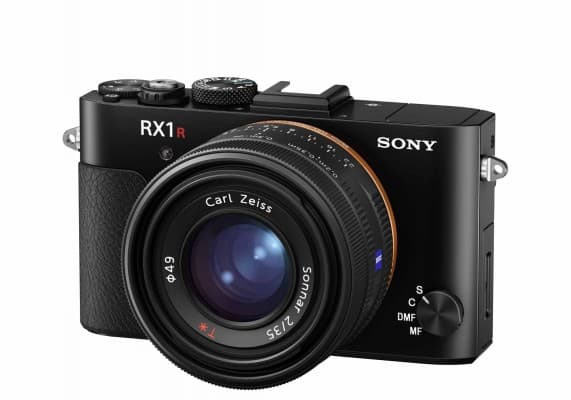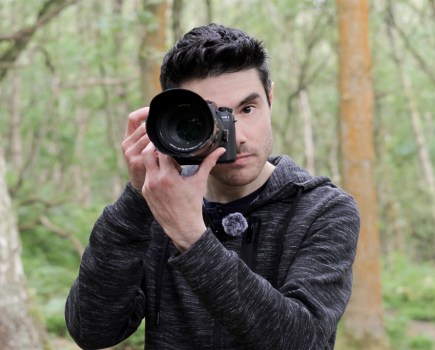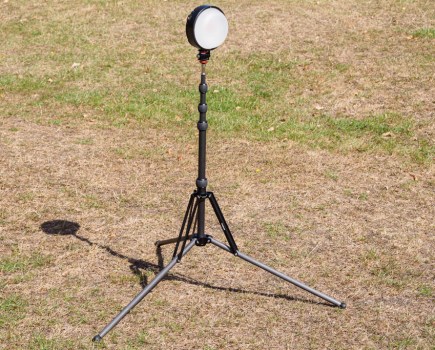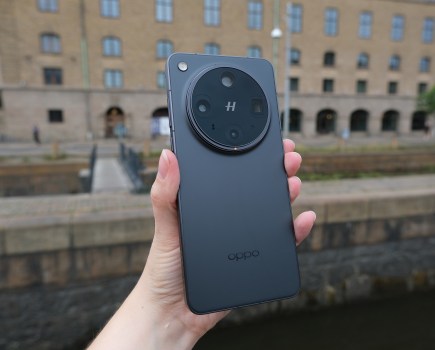Sony RX1R II review – Introduction & features
At a glance
- 42.4-million-pixel full-frame Exmor R back-illuminated CMOS sensor
- ISO 100-25,600 native, ISO 50-102,400 expanded
- 35mm f/2 Zeiss Sonnar T* lens
- Pop-up OLED EVF with 2.4-million-dot resolution
- Tilting 3in LCD with 1,228,800-dot resolution
- 399 phase-detection AF points
After a flurry of camera announcements from Sony towards the end of 2015 we were not expecting any big launches. However, as the year drew to a close Sony surprised us with the Cyber-shot DSC-RX1R II – a replacement for the RX1R. This full-frame compact boasts the same 42.4-million-pixel sensor as the Alpha 7R II and a fixed 35mm f/2 lens. Although quite niche, all this makes the RX1R II a really interesting camera.
While the Sony RX1R had been unchallenged for several years, the Leica Q (announced just months before the RX1R II) now occupies the same niche. It boasts a 28mm f/1.7 lens and a 24-million-pixel full-frame sensor, along with an incredible 3.68-million-dot EVF So, does the RX1R II do enough to stave off the competition?
Features
The headline feature of the RX1R II is the sensor technology. At the heart of this compact camera is a 42.4-million-pixel Exmor R back-illuminated CMOS sensor – the same sensor unit as that used in the Alpha 7R II. When we tested the A7R II we praised the sensor for its excellent dynamic range, resolution and signal-to-noise ratio, so to have it included in a compact is quite special.
The press release for the RX1R II made reference to the ‘world’s first’ variable optical low-pass filter. This is an innovative piece of technology that attempts to combat the issue of moiré patterning or aliasing, while also giving users the ability to turn it off when they want the gain from extra resolution.

So, with the advent of this technology, Sony does not need to release two versions of the camera, such as the RX1R/RX1; instead, it has a single version, the RX1R II. Users can select the anti-aliasing level between off, standard and high, or even choose to bracket the effect to see how much anti-aliasing they need when reviewing the images.
Processing power is handled by the Sony BIONZ X image-processing chip, which is capable of delivering an impressive 5fps when set to speed priority continuous shooting. When you consider the resolution and the huge amount of data being moved around, that’s a significant achievement. This processor helps deliver a native ISO sensitivity range of 100-25,600, with expandable settings going from ISO 50 to a whopping 102,400.
As you would expect, the RX1R II will shoot JPEG and raw images. The interesting addition is that the camera also allows users to shoot uncompressed raw files. These are around twice as large as standard raw files and don’t show any compression artefacts, resulting in better image quality. It’s also worth noting that uncompressed raw is a feature that has also been rolled out in the Alpha 7R II in the form of a recent firmware update, and is featured on the Alpha 7S II.
The native aspect ratio of the RX1R II is 3:2, but Sony has allowed users to select different aspect ratios using smaller areas of the sensor.
Of course, a great sensor isn’t going to give great image quality without a decent lens. Sony continues to use a fixed 35mm f/2 Zeiss Sonnar T* lens with a nine-blade aperture diaphragm, which was also featured in the RX1/RX1R. This lens boasts a manual fly-by-wire aperture ring, and a ring on the lens allows users to select a close-focusing mode. This switches the focusing to 0.2-0.35m, with the 20cm minimum focusing distance being quite reasonable for close-up photography.

With the 35mm focal length, the camera lends itself well to street photography
Some people may look at the RXR1 II and be deterred by the inability to change the lens, but there are significant advantages of this over an interchangeable-lens camera. The biggest is that the lens can be designed to optimise its performance with the sensor – more so than is possible with an interchangeable lens. Sony claims the lens is specifically designed for the sensor, but the sensor has changed since the previous camera, and the lens design remains the same, making that a somewhat confusing statement. It is possible the lens has been tweaked for the new sensor.
Another advantage of the fixed lens is that it has given Sony the freedom to place optical elements of the lens further back from where the mount would usually be. Because of this, the lens designers have one less restriction, so the lens can be made smaller than a corresponding interchangeable lens.
IOS and Android smartphone and tablet users can make use of the RX1R II’s Wi-Fi and NFC connectivity via the Sony PlayMemories app, which allows users to send and receive images to their device and control the camera remotely. For a while now there have been some optional extras inside the PlayMemories app: it’s possible to add timelapse for £7.99, for example, and lightpainting for £3.99.
Video is an interesting area on the RX1R II. Although it has the same sensor as the Alpha 7R II, it doesn’t record 4K footage internally as the Alpha 7R II does. Instead, its maximum resolution is 1,080×1,920, with up to a 60p frame rate. It saves those files in the XAVC format at up to 50mbps. Audio can also be captured with the use of an external microphone via the 3.5mm stereo jack on the side of the camera. While the video quality is good, it’s a pared-down specification in comparison with the Alpha 7R II. It’s quite possible the optical low-pass filter and close proximity of the lens elements to the sensor could inhibit the heat dissipation required to capture 4K footage.

Previously, the RX1/RX1R camera had a pop-up flash, and if users wanted an electronic viewfinder they would need to buy the optional extra and attach it to the hotshoe. On the RX1R II the pop-up flash has gone and in its place is a pop-up OLED EVF (more about this later). There’s also a hotshoe over the lens that is compatible with a range of Sony accessories, including flashguns, an external mic and even the EVF.
A Sony NP-BX1 battery is used in the RX1R II, which is small and packs enough power for 220 shots per charge. For me, this is pretty low and I could easily drain the battery in a productive afternoon’s shooting. The saving grace is that a spare battery is also small, so although it’s annoying having to buy another battery it’s not too much trouble to carry one. Also, the camera can be charged via USB, so it’s possible to use a power bank to keep it topped up.
Sony RX1R II review – Build and handling
In design and style, the RX1R II is more or less identical to the original RX1/RX1R series. The changes are minor, and the same squared-off body we’re used to seeing on the Alpha 7 series continues in the RX1R II. Measuring 113.3×65.4x72mm, the camera is very small, especially considering it’s a full-frame model. While it’s not really pocketable it will fit inside a large coat pocket, but the chances are it will need to be carried in a camera bag.
The camera body is constructed entirely from metal, which makes it quite heavy at 507g. However, this also makes it durable and gives it that truly premium feel. The button arrangement is straightforward, and there are three custom buttons that can be assigned functions that suit the photographer. I think many will find the RX1R II difficult to get to grips with at first, but once you get the hang of it this camera has a comprehensive range of functions and menu options.

The only control that can be an issue is the small focus-mode selector at the front. This switch has a low profile and just a couple of small grooves for grip, making it fiddly to change. In the hand the camera feels good, and there are optional accessories to improve this further, including a front hand grip, a big rear thumb grip and specially designed leather cases.
The RX1R II has a built-in EVF. This means it’s a slightly different handling experience to that of the RX1/RX1R, on which users would rely more on holding the camera at arm’s length and composing with the LCD if they didn’t have the optional EVF attached.
Although the lens has a manual loveliness to it, when moving the aperture ring quickly you don’t get confident clicks between apertures as you would on many manual aperture lenses. If you compare it to many of the Fujifilm X-series lenses, it falls behind in its handling experience. The manual focusing is a great feature to have, but it is fly-by-wire focusing rather than a mechanical system. It’s a small detail, but it does make a difference overall.
Having an exposure-compensation dial is a huge bonus, and while we would usually say it’s great for correcting the metering that’s rarely the case as the metering is very accurate. Instead, it’s great for adjusting the exposure to make the best possible use of the sensor’s huge dynamic range.
Sony RX1R II review – LCD and viewfinder

One of the most significant additions to the RX1R II is the OLED electronic viewfinder, which boasts a 2.4-million-dot resolution and an equally impressive 0.74x magnification. This is a pop-up type similar to the one found on the RX100 IV, but it is slightly more refined as it allows users to pop it up with a single motion, with no need for a secondary action to extend the eyepiece as is required on the RX100 IV.
Included with the camera is a rubber eyepiece that can be slotted onto the EVF once it pops up. It greatly improves the visibility of the EVF and prevents light from entering the viewfinder from the side. Although useful, it’s also rather easy to forget or lose, and just inconvenient to locate in your kit bag and attach it quickly.
An ongoing complaint of mine with Sony Alpha 7 cameras is that the EVF is often too contrasty, especially in dark indoor environments, and the colours can appear dull through the viewfinder. This can also be an issue with the RX1R II. That slight gripe aside, the EVF’s performance is incredibly good. The refresh rate is excellent even in low light, and the resolution is equally impressive.
This viewfinder is located on the far left of the camera, which isn’t a problem, but having been fortunate enough to use the Canon PowerShot G5 X, which has an EVF directly over the lens, the central positioning gives a much better handling experience. Thankfully, there is a hotshoe over the lens that will take an electronic or optical viewfinder. While I would hesitate to spend the £360 premium on the Sony EV1MK EVF, if I already had one I would use it to improve the handling.

The RX1R II’s LCD screen is an improvement over its predecessor. It’s no longer a fixed screen and now tilts 109o upwards and 41o downwards to allow users to shoot better at high or low vantage points. This screen is 3in and has the same 1,228,800-dot resolution as the previous RX1/RX1R. It also has an RGBW display, which adds a white dot for each pixel, helping to give better colour accuracy and conserve battery life compared with those screens that haven’t got it.

Thanks to the RX1R II’s tilting screen, it’s really easy to shoot at low angles
With all the improvements, it’s surprising not to see touchscreen functionality in this new camera. While it may not be the preferred way to change settings for the enthusiast photographer, I would have liked to be able to pinch zoom to check images on the back of the screen, especially as any camera shake is very visible with a 42-million-pixel sensor. In use, though, the LCD is very good, with bright punchy colours and ample resolution.
Sony RX1R II review – Autofocus

Significant improvements have been made to the RX1R II’s autofocus system, as it borrows much of its technology from the Alpha 7R II. A total of 399 phase-detection autofocusing points and 25 contrast-detection autofocusing points covering 45% of the frame are featured on the RX1R II. Sony says this advancement has led to a 30% increase in focusing speed over the previous RX1/RX1R. Another addition to the camera is the inclusion of continuous autofocusing that can be selected using the AF mode selector on the front of the camera.
In use, the autofocus of the RX1R II is noticeably faster than the previous model, and it has a particular advantage in low light. The focus speed still isn’t mind-blowing, but the improvements over the RX1 are noticeable, and it’s quick enough for capturing pictures in low-light situations.
In continuous focusing mode, the focus points dance around the screen rapidly, tracking subjects rather well. With 5fps continuous shooting, users can get a good burst of shots with a high rate of success in good light.

In low light, the RX1R II’s focusing can be rather slow but it is accurate
With a camera such as this I like to select a specific AF point, but it’s hard to position the AF point around the frame. Even if I customise the middle button to allow me access, the focus point still requires two presses before I can move the point around. I tended to use the focus recompose technique, but the 42-million-pixel sensor isn’t very forgiving when it comes to minor focusing errors caused by using this technique. This is one area where a touchscreen would be useful.
Sony RX1R II review – Metering
Thanks to a 1,200-zone evaluative metering sensor featured inside the RX1R II, the metering overall is brilliant. The camera offers a choice of multi-pattern, centreweighted or spot metering, and works well in all settings.

Even in challenging light the metering is good at choosing a fairly decent balance between highlights and shadows, giving good exposures straight out of the camera. On the top-plate there is an exposure compensation dial that covers ±5 EV in 1⁄3-stop increments. However, the only time I needed this was in a creative situation, when I was trying to get the most out of the sensor. It’s possible to pull an astonishing amount of detail from the shadows when shooting raw on the RX1R II. I’d have liked a highlight priority metering mode, such as the one found on some Nikon DSLRs.
This would allow users to get an exposure that keeps much of the highlight detail. Then, in post-production, it would be possible to lift the shadows to achieve an image that captured a large dynamic range.
Sony RX1R II review – White balance and colour

Thanks to the great dynamic range, it is possible to push the shadows and highlights of a raw file extensively to achieve great results
As you would expect, all the usual settings for white balance are available on the RX1R II, including plenty of presets, automatic and manual white balance. Compared with the RX1/RX1R, there is more scope for adjusting the green/magenta bias and amber/blue bias. To be precise, there are twice as many points across the amber-to-blue axis and four times as many across the green-to-magenta axis over the original RX1. Overall, colours from the JPEGs are well rendered. There are occasions where the scene is rather dull and the images can be undersaturated, but this is easily corrected.
What is very impressive is how much colour information the camera holds in dark shadows. When lightening even the darkest of shadows, there is still lots of colour information so images are easier to process.
Sony RX1R II review – Image Quality
As the RX1R II features the same 42.4-million-pixel Exmor R back-illuminated CMOS sensor as the Sony Alpha 7R II, we were expecting good results – and we were not disappointed. This sensor is class-leading, giving extremely good performance all round. The dynamic range is exceptional, giving over 13 stops of dynamic range and, importantly, retaining dynamic range rather well across the ISO range. Aided by the high-quality lens, the sensor can also resolve a large amount of detail right the way through the ISO range. The new variable optical low-pass filter system works well to combat moiré while not compromising much on loss of detail. Noise is well controlled, and I would comfortably shoot all day long between ISO 50 and ISO 6,400. Overall, the colour rendition is good, with bright and punchy colours in JPEGs that are true to the scene.
Dynamic range

Our tests reveal that the Sony RX1R II sensor is capable of capturing over 13 stops of dynamic range. This makes it one of the best full-frame cameras we have ever tested, and in practice it’s easy to see there’s a wealth of information in both shadows and highlights. It retains a respectable dynamic range right up to ISO 800, only dropping by just over a stop to 12.2EV. Thereafter, full-stop ISO increments drop in dynamic range by around 1 stop each, with ISO 16,00 achieving 11.2EV and ISO 12,800 recording 7.6EV.
Resolution
In the top set of crops we show how Sony’s new variable OLPF tackles moiré patterning. A score of 5,600l/ph is gained at ISO 100 when the LPF is turned off, and although it has obvious signs of colour moiré and grid-like aliasing, it boasts extremely good resolution. In the LPF standard mode, and at the same ISO, a score of 5,200l/ph is achieved; LPF high gives a 4,800l/ph score. Looking at high ISOs, an impressive 3,800l/ph is achieved from an ISO 6,400 file, while ISO 25,600 scores 3,400l/ph, and ISO 102,400 achieves 3,000l/ph.

ISO 100

ISO 400

ISO 1,600

ISO 6,400

ISO 25,600

ISO 102,400
Noise
Both raw and JPEG images taken from our diorama scene are captured at the full range of ISO settings. The camera is placed in its default setting for JPEG images. Raw images are sharpened and noise-reduction applied to strike the best balance between resolution and noise.

ISO 50

ISO 400

ISO 1,600

ISO 6,400

ISO 25,600

ISO 102,400
At its lowest standard sensitivity of ISO 100, the Sony RX1R II gives fantastically detailed and clean results in both raw and JPEG files. This good form continues right the way up to ISO 800. After this, it’s possible to see some luminance noise on a pixel level, although with such a high-resolution file it’s hard to notice noise on anything from 100 through to ISO 6,400 when previewing an uncropped image A4 or smaller. Even when lightening the shadows extensively at ISO 6,400 there’s not much luminance noise to be seen, and while the finer detail is smudgy in JPEG, it’s possible to get a fair bit more from processing a raw file. At the top-end native sensitivity of ISO 25,600 much of the finer detail is lost and colour noise starts to appear, but it’s still a usable file when the shadows aren’t pushed extensively. At the extended ISO 102,400 sensitivity noise is quite extensive, especially in JPEGs.
Sony RX1R II review – Our verdict

If I were in the market for a luxury compact, I would base my decision on what focal length better suits my photography. Sony’s sensor technology is well and truly ahead of the game, and the 42.4-million-pixel sensor inside the RX1R II is at the forefront of this.
For many users, such a high-resolution image is not necessary, but it does give users the ability to crop extensively, resize images to achieve a better noise reduction and, if required, print large-scale prints.
The RX1R II isn’t the type of camera you tote around for shooting thousands of images as you would, say, a wildlife or sports-centric DSLR. However, when shooting raw, it’s easy to fill a 16GB card in a day’s shooting. While the metering is accurate, I found that exposing images slightly under and bringing the shadows up in post-production yields the best results – there’s so much information in the shadows, thanks to the sensor’s dynamic range.
Of course, all sensors are limited by the quality of the lens, and the 35mm f/2 is a worthy companion. The optical performance of the lens matches the quality of the sensor with great sharpness and great control over distortion and chromatic aberrations. While the autofocus is not radically fast, it’s quicker than in the previous model, being rapid in good light and still finding focus in under a second in low light.

The lens is incredibly sharp, and at f/4 the detail captured is class-leading
High ISO performance is especially impressive, and it’s possible to crank the ISO up to 6,400 without having images blighted by noise. Sensitivities up to ISO 1,600 look great even when pixel peeping, and lower ISOs show huge amounts of detail.
Sony menus are somewhat annoying, and the omission of a touchscreen is a disadvantage as it would have given an easier solution to moving the focus point around when using a single point. In all, the RX1R II is a rather specialist camera that’s expensive, but equally an impressive piece of kit.









